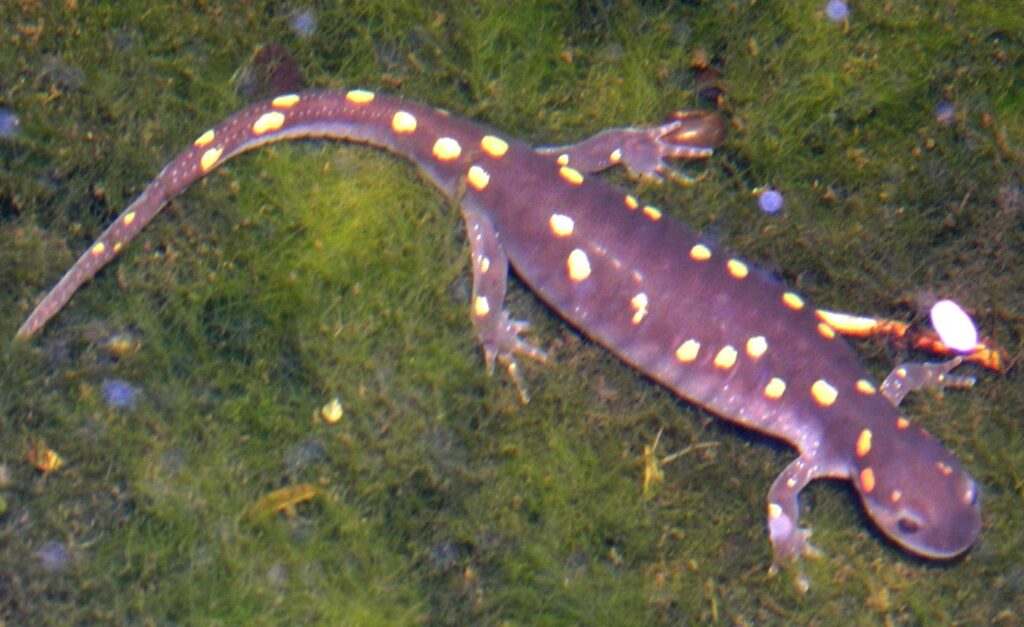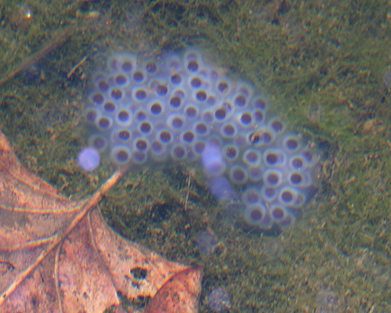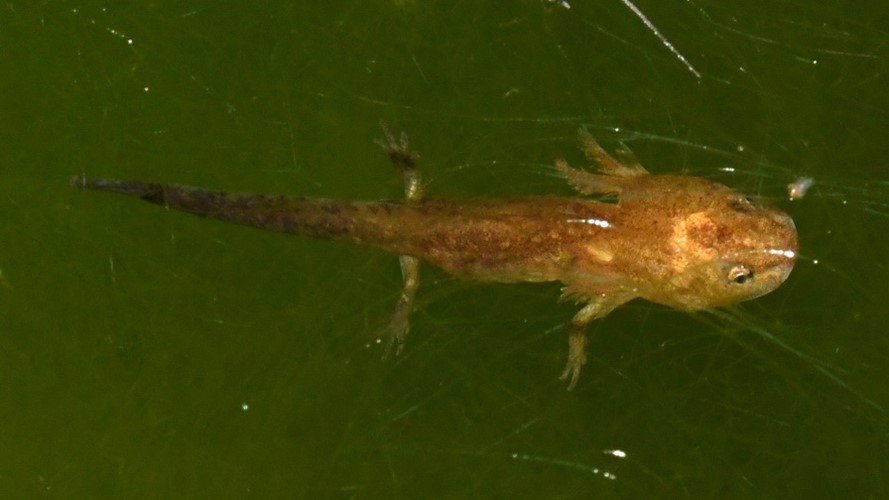The Spotted Salamander (Ambystoma maculatum)
By Roger Rittmaster
Each Spring, starting with the first warm rain (> 40 degrees F) in early-to-mid April in Mid-Coast Maine, Spotted Salamanders migrate from their subterranean forest homes to nearby vernal pools to mate. Adults spend > 95% of their lives hidden away in burrows or under logs or rocks. They are nocturnal, coming out at night to feed on earthworms and other denizens of the forest floor. When disturbed, they produce a toxin from glands on their neck and back.
Spotted salamanders in Maine can be easily recognized because the full-grown adults are large (5-7 inches in length) and usually have two rows of yellow spots extending from their head to tail.

Each spring the males tend to migrate first, back to the pools where they were born, with females following a few days later. This is somewhat variable due to vicissitudes in the weather, and individual adults do not necessarily migrate every year. If conditions are right, many salamanders migrate at once (a “big night”). Unfortunately, this is when the salamanders are most vulnerable, succumbing to vehicles as they attempt to cross roads. When present together, the males and females may participate in a courtship ritual writhing around each other. Otherwise, mating is hands-off.

Eventually, the males deposit white spermatophores on the bottom of the vernal pool, to be picked up by the females to fertilize their eggs. The females then lay up to several gelatinous egg masses, usually attached to submerged vegetation. The eggs can be distinguished from similar wood frog eggs by each egg being surrounded by its own clear or white jelly. Often the symbiotic algae Oophila amblystomatis grows in the egg mass and is thought to increase oxygen availability to the larvae.

The eggs take 30-60 days to hatch, depending on water temperature. The larvae take at least 60 days to mature into juvenile adults, and if the vernal pool does not dry up, some may overwinter in the water. The larvae are voracious feeders, eating whatever small species they find in the water, often mosquito larvae.

